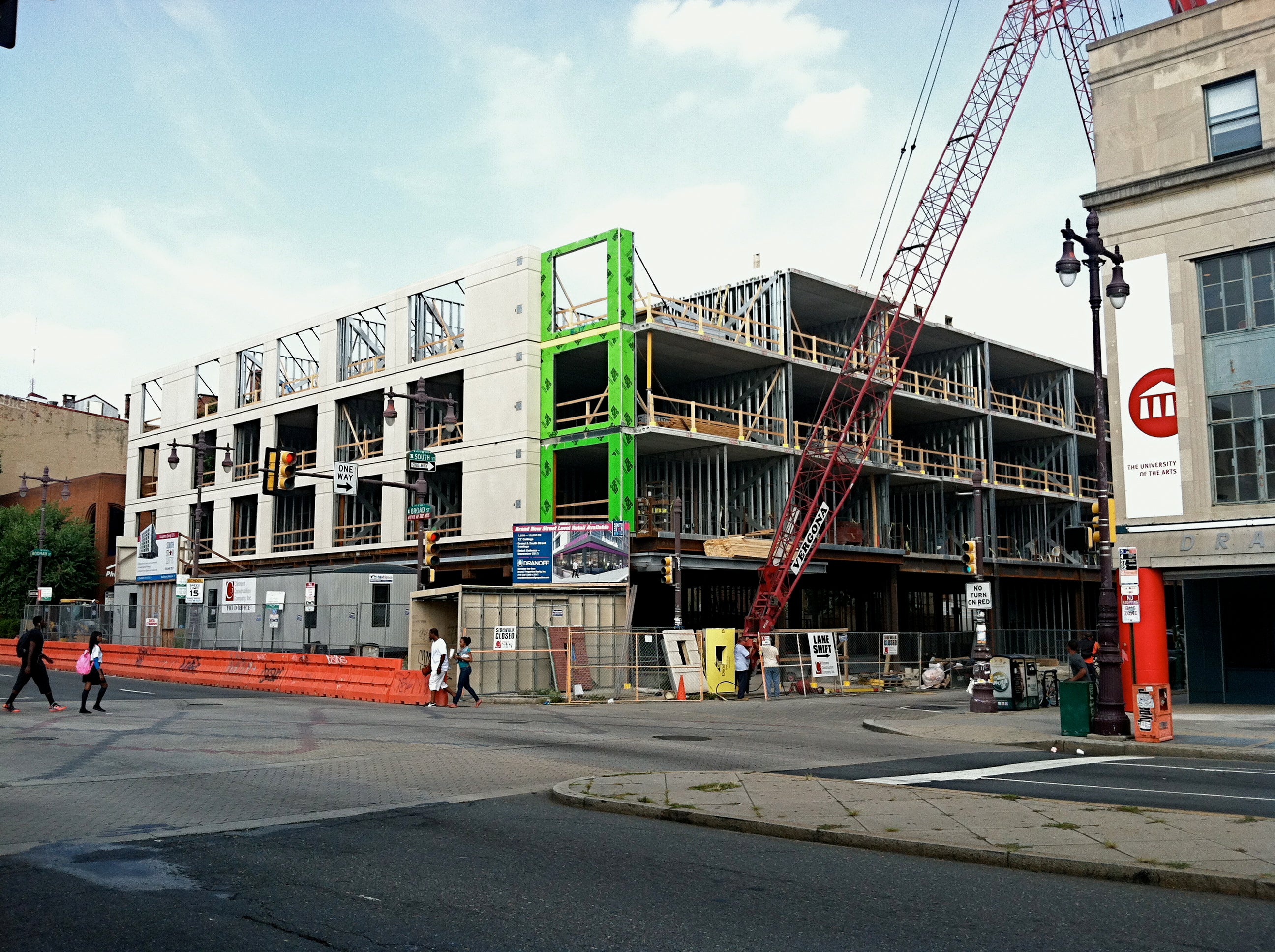Developers discuss transit trends, impact on development

While it might seem obvious that a lot of people who work in Philadelphia get to work using public transportation, this relatively recent trend is part of a significant cultural shift that is already changing not only how Philadelphians commute but also how they do it and where they live.
One day after the Center City District (CCD) and Central Philadelphia Development Corporation (CPDC) released their “How Philadelphia Gets to Work” report, which found that 70.5 percent of Philadelphians commute on public transit, the partner organizations hosted an event to ask prominent developers Jerry Sweeney, president and CEO of Brandywine Realty Trust, and Carl Dranoff, president and founder of Dranoff Properties, how shifting transportation trends affect their respective commercial and residential development decision making.
When Sweeney was first cutting his teeth as a commercial developer, development trends were more horizontal, he said. First a highway was built. Then housing and a retail center followed.
“We didn’t give much thought to different modes of transportation,” he said.
As recently as 10 years ago, 33 percent of the rent Brandywine Realty collected came from properties in suburban New Jersey. Less than five percent came from Philadelphia, and another 25 percent came from Philadelphia’s Pennsylvania suburbs.
Today, those numbers have flipped. Less than 5 percent of the rent Brandywine Realty Trust collects comes from its suburban New Jersey markets, and Philadelphia alone generates 30 percent of the rent the firm brings in. Brandywine has also focused more attention on development in the Washington D.C. metro area, which now generates about 25 percent of the company’s rental income. Multimodal transportation played a critical roll in the shift.
“We really bet on the theory that access to infrastructure is an incredible asset to, not just creating sense of place, but to creating long term value,” Sweeney said.
Recently Brandywine Realty, when considering expanding its presence in Washington D.C., looked at how its office buildings there have performed over 20 years, given various factors. Among those factors, the firm looked at the properties’ proximity to the Metro.
“It was beyond the pale,” Sweeney said. “There is no question that properties that have access to more than one form of transportation will perform better through peaks and valleys in economic cycles.”
Like Brandywine Realty Trust, Dranoff Properties has responded to the culture shift away from auto-centric thought, toward more multimodal transportation. Dranoff said the demographic and community preference changes have been profound since he started in the business. He said today, unlike in the past, young people are urban oriented, and fewer are buying cars and houses. More baby boomers are moving back to the city, too, and for a growing percentage of both generations, working from home is popular. In those cases, a commute is no longer to an office building but maybe right down the hall.
“It really has had an impact on how we design properties,” he told the audience at the Center City Philadelphia event.
Today Dranoff properties come with free bike sharing, nearby car share stations, electric charging stations and often proximity to public transportation.
“We want to give people choices,” Dranoff said.
Dranoff said many of the firm’s recent properties have, very intentionally, been built at bus or train stops. One current project at the corner of Broad and South streets is being built just steps from SEPTA’s Broad Street Line Lombard-South Station.
Some of the firm’s other, well-established properties have seen a decline in parking occupancy. At The Left Bank, for example, parking occupancy in the residential development’s parking garage has decreased 40 percent since 2001.
In neighborhoods less connected to transit though, parking is still – for better or worse – a heated issue. Take, for instance, the Dranoff Properties development in the works at 25th and Locust Street. For that proposed 21-story apartment building, Dranoff Properties initially planned on providing six parking spaces for every 10 units. The zoning code only calls for three parking spaces per 10 units, but neighbors were not satisfied with the 6-to-10 proposal.
“In that location, the neighbors felt that we did not have enough parking … because you’re not next to public transit in that location,” Dranoff said.
Discussion at the CPDC event turned to the Delaware River Waterfront, where Brandywine Realty Trust owns four piers.
“It’s almost inexplicable to me why we can’t develop those,” Sweeney said.
Dranoff noted that the “How Philadelphia Gets to Work” report shows that a higher percentage of people who live on the Delaware River commute with a car versus public transportation.
“That’s not in favor anymore,” Dranoff said.
He said the solution to the Delaware Riverfront in Philadelphia could be transit and the public investment required to make it possible.
WHYY is your source for fact-based, in-depth journalism and information. As a nonprofit organization, we rely on financial support from readers like you. Please give today.



